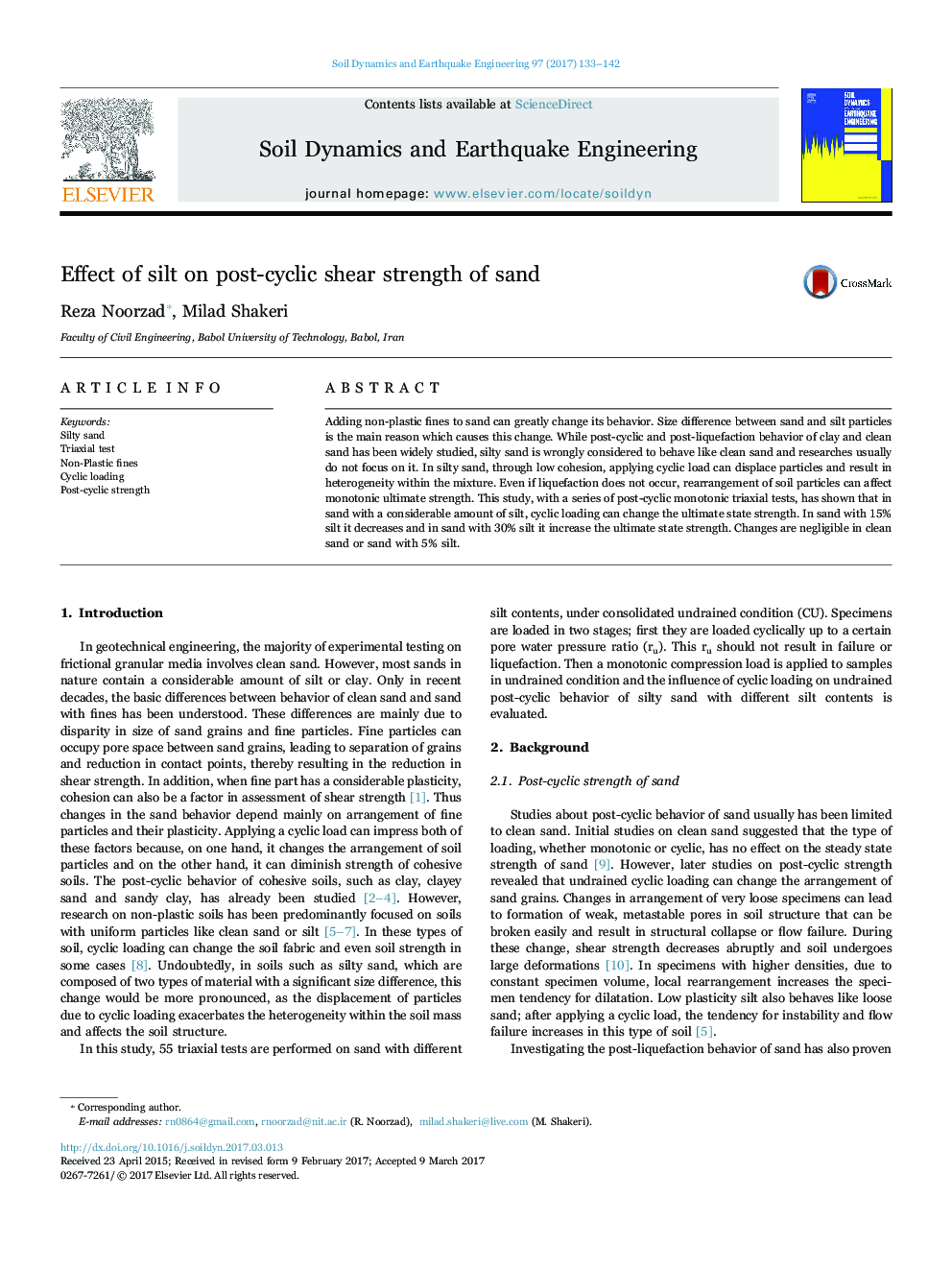| Article ID | Journal | Published Year | Pages | File Type |
|---|---|---|---|---|
| 4927116 | Soil Dynamics and Earthquake Engineering | 2017 | 10 Pages |
Abstract
Adding non-plastic fines to sand can greatly change its behavior. Size difference between sand and silt particles is the main reason which causes this change. While post-cyclic and post-liquefaction behavior of clay and clean sand has been widely studied, silty sand is wrongly considered to behave like clean sand and researches usually do not focus on it. In silty sand, through low cohesion, applying cyclic load can displace particles and result in heterogeneity within the mixture. Even if liquefaction does not occur, rearrangement of soil particles can affect monotonic ultimate strength. This study, with a series of post-cyclic monotonic triaxial tests, has shown that in sand with a considerable amount of silt, cyclic loading can change the ultimate state strength. In sand with 15% silt it decreases and in sand with 30% silt it increase the ultimate state strength. Changes are negligible in clean sand or sand with 5% silt.
Related Topics
Physical Sciences and Engineering
Earth and Planetary Sciences
Geotechnical Engineering and Engineering Geology
Authors
Reza Noorzad, Milad Shakeri,
